3. Circular fashion#
assignment#
Document how soft interlocking connection has been designed and fabricated how the connection either creates a full garment or has been applied to the seams show that the connection is well designed and holds the pull/stretch of a garment include all downloadable files in your documentation
research#
First I played with a simple module which Zoe introudeced in the class. I made it with a paper and a cutter.
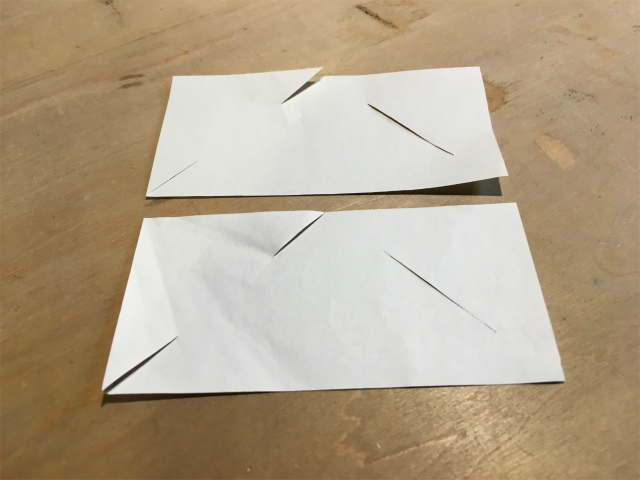
It looked like a heart, so I wanted to design a module to make a heart when they are assembled.
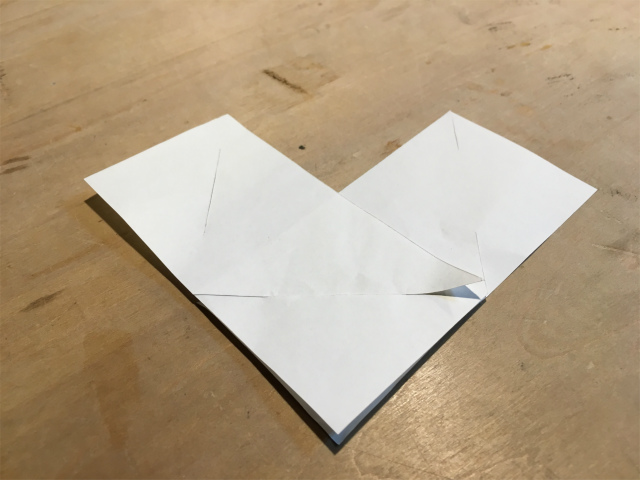
After some trials…

It was fun, but this design was not for my character.
After playing with these modules, I’ve got the feel of how to design a interlocking seams. Now I began my assignment.

pentagonal tiling#
introduction#
In Japan, we have a table cloth called 花ふきん(hana fukin; hana means flower, fukin means table cloth). Geometric artforms are made by hand stitches.
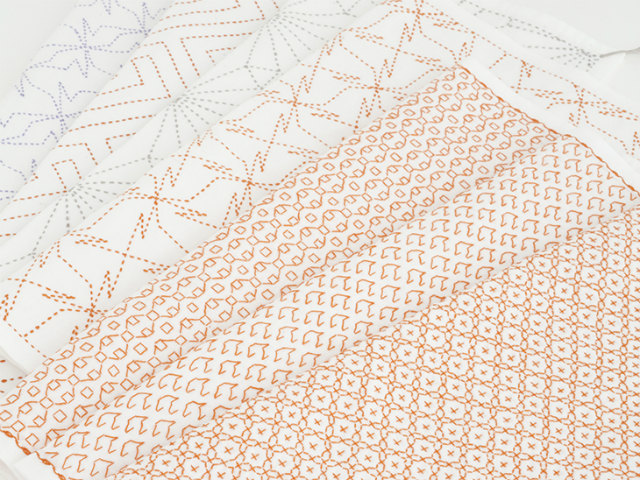
image source: 暮らしの手帖社
I wanted to design a pattern myself. When I was googling designs, I came accross Girih. Girih is “a decorative Islamic geometric artform used in architecture and handicraft objects, consisting of angled lines that form an interlaced strapwork pattern” according to Wikipedia. Mac also has an app to design geometric designs.
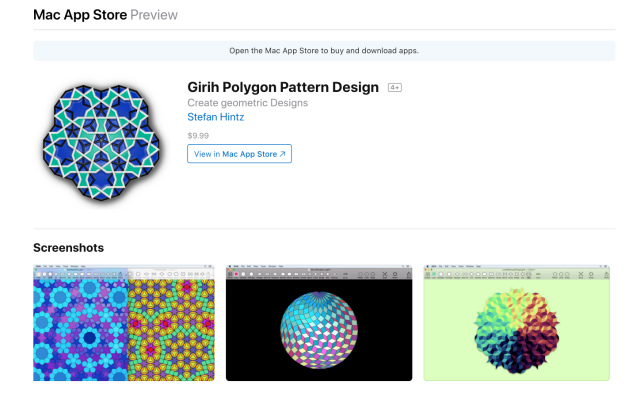
design with fusion 360#
I selected the Cairo pentagonal tiling, is one of 15 known monohedral pentagon tilings.

image source: wikipedia
The pentagon has one shorter edge of length  0.5977, and four equal longer edges of length
0.5977, and four equal longer edges of length  .8165. I drew a hexagon on Fusion 360 which is composed of four pentagons because I don’t want interlocking part to become so complicated. Interlocking design idea came from Kai who is a member of FabLab Kamakura and a graduate of Fab Academy 2018.
.8165. I drew a hexagon on Fusion 360 which is composed of four pentagons because I don’t want interlocking part to become so complicated. Interlocking design idea came from Kai who is a member of FabLab Kamakura and a graduate of Fab Academy 2018.
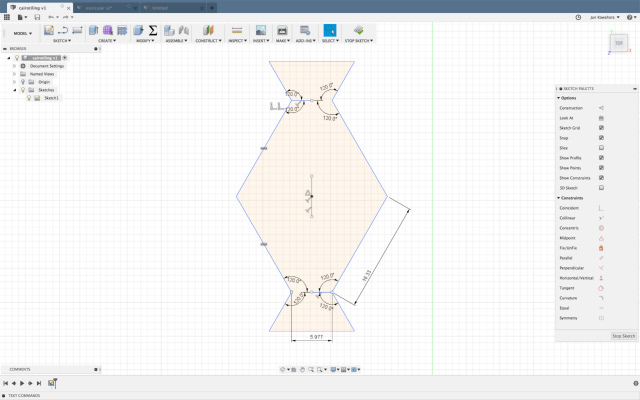
Thanks to Kai’s design, interlocks worked fine.
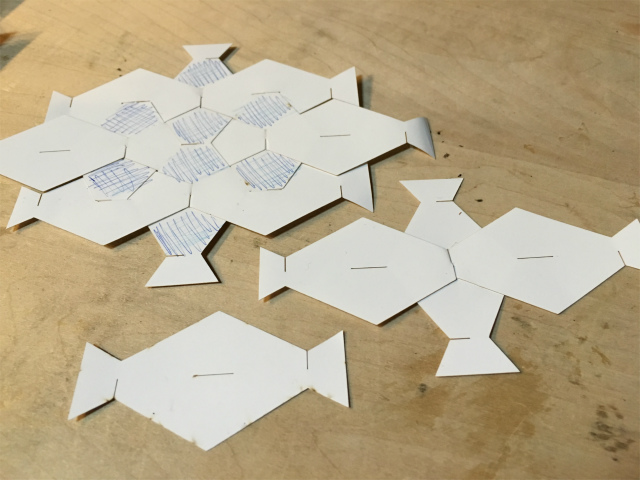
Next, I lasercut a sheet of felt, which is made of polyester not wool.
Laer cutting settings are as follows.
felt: polyethylene
thickness: 1.4 mm
power: 25
speed: 4
frequency: 1,000 Hz
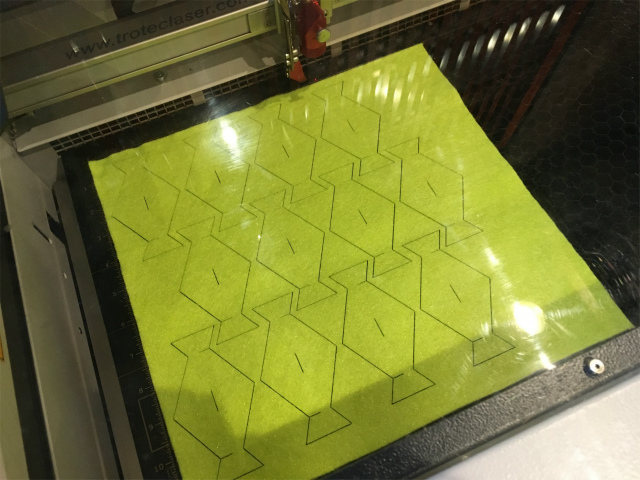
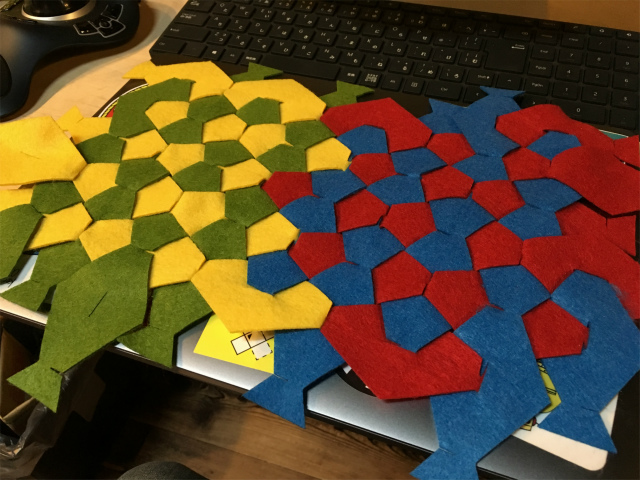
I uploaded my files to open source circular fashion.
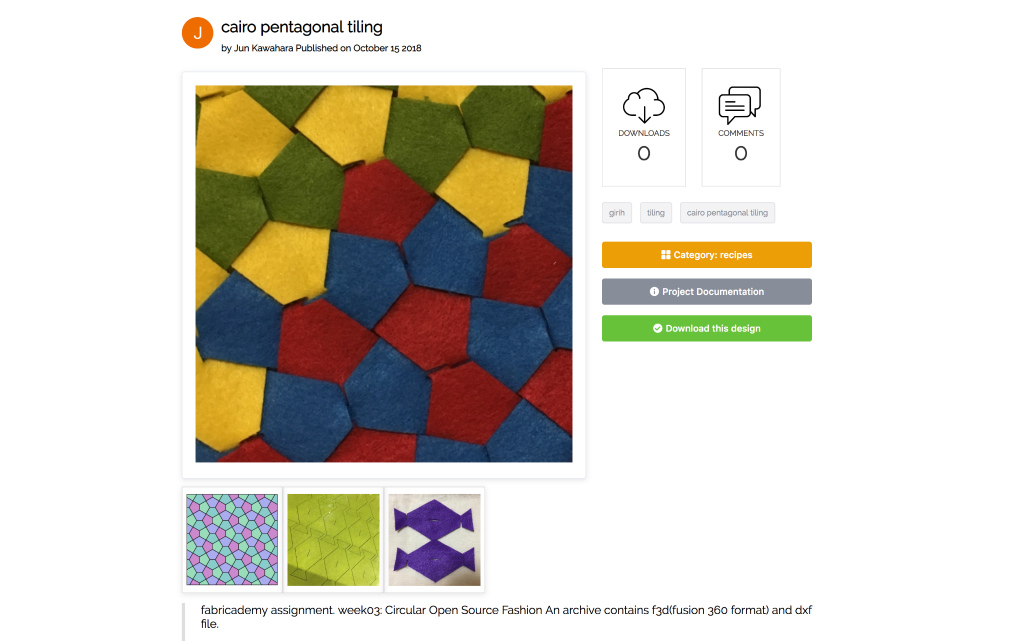
thought experiment#
After this week assignment, I’m thinking about making kimono with modules for final project. So, let’s do some thought experiments.
Kimono is made of a long strip of fabric, 一反(1-tan). 1 tan is the unit for one kimono. It is about 36 cm wide and 1200 cm long, which means total area of a Kimono is 43,200 cm2.
If I make a Kimono from a rectangular module tested above, I’ll need 1,728 modules(!) for a whole kimon. Its area is 50 cm2(5 cm width and 10 cm length), but effective area for a garment is the half of it, 25 cm2, because the rest of a module is used for interlocking.
For cairo tiling module, it’s less effective design for a garment. Nearly 3,300 modules will be needed…
This means I have to carefully design modules which effectively create a garment and interlock themselves firmly.
| module shape | number of modules needed | total area |
|---|---|---|
| Kimono | 8 | 43200 cm2 |
| rectangle | 1,728 | 43200 cm2 |
| cairo tiling | 3,300 | 43200 cm2 |
Curvahedra#
Another model I wanted to make besides a pentagonal tiling was Curvahedra
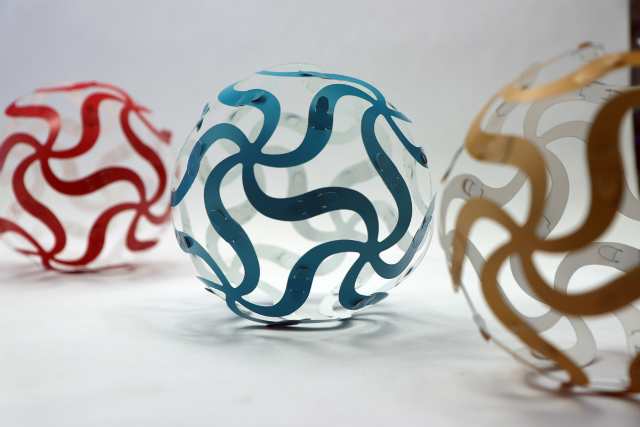
I drew a module on Fusion 360 with different interlock design.

Pentagonal pattern can’t make a flat garment, but can make a sphere.

Curvahedra is a 3D puzzle.

After paper prototyping, I cut felt sheets and assembled them. Final result, I don’t know what the hell this is…
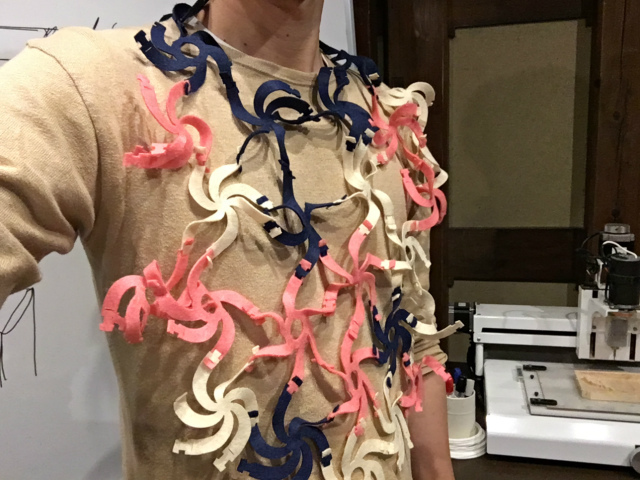
not zero-waste design#
I should have considered designing zero-waste pattern and pattern array.

file and reference#
- see at open source circular fashion
- Isoperimetric Pentagonal Tilings - ResearchGate